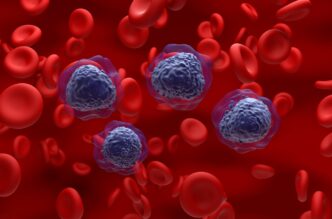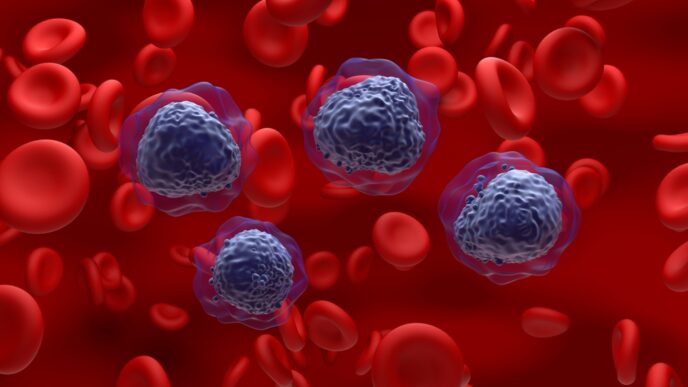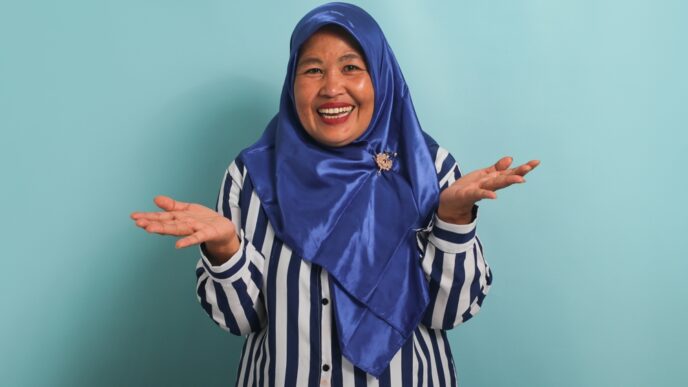HER2+ breast cancer is an aggressive form of the disease driven by the overproduction of the HER2 protein, which fuels rapid tumor growth. While more common in women, it can affect anyone. Advances in targeted therapies are offering hope, transforming what was once a daunting diagnosis into a more manageable condition.
WORDS LIM TECK CHOON
 FEATURED EXPERT FEATURED EXPERTDR THO LYE MUN Consultant Clinical Oncologist Beacon Hospital |
UNDERSTANDING BREAST CANCER WITH MOLECULAR MARKERS
“Breast cancer is not a single entity,” says Dr Tho Lye Mun.
- Breast cancers can be differentiated by types of receptors that are present on the surface of the cancer cells.
- These receptors are known in medicine as molecular markers.
- These molecular markers interact with specific substances — such as ligands or hormones — and together they trigger the growth of cancer cells.
Examples of molecular markers are:
- Human epidermal growth factor receptor 2 (HER2)
- Estrogen receptor (ER)
- Progesterone receptor (PR)
Plus or Minus?
If a molecular marker is detected on a cancer cell, it is indicated with a plus or + sign.
- For example, breast cancer cells with HER2 markers present are known as HER2+ cancers.
- If the markers are not present, then these breast cancer cells are known as HER2- cancers.
Why Is This Important?
Oncologists or cancer specialists check for certain markers to help them:
- Get a better idea of how aggressive the cancer is.
- Decide which treatments are likely to work best for their patient.
NOW, LET’S TALK A CLOSER LOOK AT HER2+ BREAST CANCER
Consultant clinical oncologist Dr Tho Lye Mun explains that:
- HER2 stands for human epidermal growth factor receptor 2.
- It is a protein that is involved in supporting normal cell
growth. - About every 1 in 5 breast cancer cases is HER2+, which means abnormally high levels of HER2 protein are detected through laboratory tests.
HER2+ cancer can be very aggressive – it can grow and spread quickly to other parts of the body if left unchecked.
TREATING HER2+ BREAST CANCER
Dr Tho explains that the treatment options available to a patient depend on the stage of the cancer.
- The higher the stage of the cancer, the more advanced it has progressed and hence treatment is fairly complex with lower chances of a favourable outcome. Hence, regular mammogram is important to detect and treat breast cancer at an early stage.
- It is fairly common for a patient to receive a combination of several treatments.
- Also, different people can respond differently to the same treatment, so it is possible for two patients with the same type of cancer to receive different types of treatments.
| Click here to find out more about getting a mammogram with consultant clinical oncologist Dr Winnie Ng Nyek Peng. |
Surgery
- May be a treatment option for early breast cancer.
- The breast cancer tumour along with a small rim of surrounding normal tissue will be removed either via wide local excision or lumpectomy.
- If the tumour is too large in relation to breast size, the entire breast is removed in a surgical
process called mastectomy. - Adjacent lymph nodes will also be removed, so that they can be examined to determine whether they contain cancer cells. Presence of cancer cells in lymph nodes suggests strongly that the cancer has spread to other places in the body.
Chemotherapy
- Chemotherapy medications directly kill cancer cells.
- Side effects can occur as the treatment also affects normal cells, especially those of fast-growing tissues such as the hair and the gut.
- However, the effects on normal organs tend to be temporary.
Radiotherapy
- Also called radiation therapy, this involves aiming a powerful radioactive beam at the location
of cancer cells to kill these cells. - Modern radiotherapy equipment uses advanced software that allows the radioactive beam to avoid normal organs such as the heart and lungs.
Targeted Therapy
- The most accurate kind of treatment, this involves the use of medications that specifically block the production of HER2.
- This treatment is effective in slowing down the growth and spread of HER2+ breast cancer cells.
- Targeted treatments have significantly improved treatment outcomes of HER2+ breast cancer, so much so that many oncologists have come to regard them as an essential part of therapy for patients with HER2 breast cancer.
How These Treatments Come Together in a Breast Cancer Treatment Plan
There are different categorizations of treatment when it comes to cancer.
Curative or radical treatment aims to remove the tumour completely, with
the aim of curing the patient of the disease.
Adjuvant treatment is given to reduce the chance of the cancer coming back or recurring.
- It is given when the oncologist suspects that the patient’s cancer cells have not been completely removed during surgery.
- Can be chemotherapy, hormone therapy, radiation therapy and HER2 targeted therapy.
Neoadjuvant treatment is administered before a surgery.
- It helps to reduce the risk of recurrence as well as to make the surgery easier to carry out and/or improve the effectiveness of the surgery.
- Examples include targeted therapy and chemotherapy to shrink the size of the tumour before surgery.
- Dr Tho points out that neoadjuvant treatments are more likely required for larger tumours or tumours that have an aggressive behaviour.
| This article is part of our series on breast cancer. |













